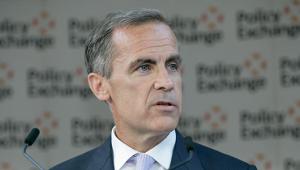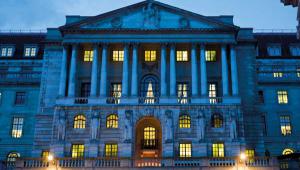By Richard Johnstone | 13 February 2014
Bank of England governor Mark Carney has updated the forward guidance that the bank will use to determine future interest rises, but analysts warned the changes meant the policy was now confusing.
In his monthly inflation report press conference, Carney said the bank’s policy would evolve once the previous commitment to not increase rates until unemployment fell below 7% had been met. The jobless rate is expected to fall below this threshold in the spring.
The new guidance stated the bank would set rates at a level that will seek to absorb all the spare capacity in the economy within the next two to three years. If the Monetary Policy Committee concludes that scope remains to absorb the spare capacity it will not raise rates.
Carney said this recognised that spare capacity – as measured from unemployment and under-employment, as well as production within companies – was both wasteful and risks below-target inflation.
‘The timing and pace of any increase in bank rate will reflect the degree of spare capacity and the pace with which it is being absorbed,’ he said.
‘The MPC will be monitoring a broad range of indicators including unemployment, participation in the labour market, average hours worked and the extent of involuntary part-time working, surveys of spare capacity in companies, labour productivity, and wages.’
When a decision is taken to raise interest rates, Carney also pledged the bank rate would rise only gradually from its current historic low of 0.5%. He also said the bank’s quantitative easing programme, which purchases government bonds, would remain unchanged at £375bn until the first interest rate rise.
‘For a sustained and balanced recovery, the degree of stimulus will need to remain exceptional for some time,’ he added. ‘The timing and pace of any increase in bank rate will reflect the degree of spare capacity and the pace with which it is being absorbed.’
Responding to the announcement, asset management firm Schroders said the bank had ‘bamboozled’ with the changes.
Its European economist Azad Zangana said there were risks to the use of spare capacity as way to determine rates.
‘This is very similar to the old ‘Golden Rule’ as introduced by Gordon Brown, using measures of the economic cycle (and therefore spare capacity) to set targets,’ he said.
‘However, as has been proven in the past, estimates of spare capacity are highly uncertain and certainly subject to a large degree of discretion, which in our view can be manipulated to suit other objectives.
‘There is little doubt that the BoE has always considered every available indicator when assessing the degree of spare capacity, and therefore future inflation. However, the change in the bank’s communication policy looks like a “confuse and conquer” approach.
‘In our view, the information presented today highlights the Bank’s reluctance to raise interest rates.’






















